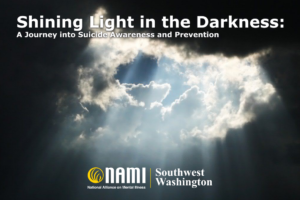By Margot Harris
When Cathy Malchiodi, Ph.D., Director of the Trauma-Informed Practices and Expressive Arts Therapy Institute, prepares for an upcoming therapy session, she needs the room to be comfortable. This requires some set up; she arranges props, makes space for movement and organizes art supplies. As her institute’s name suggests, Malchiodi specializes in expressive arts therapy, an integrated therapeutic approach that incorporates movement, sound, enactment, storytelling and visual arts to support trauma recovery.
In a first-time session, Malchiodi introduces her client to the items in the room and gauges their comfort level. If the client appears to feel safe in the space, she encourages them to try an activity, like drawing a doodle on a piece of paper or communicating through movement.
As the dialogue surrounding mental health conditions and treatment evolves and expands, practitioners and patients alike are increasingly using the expressive arts as a method to address trauma. This method can be effective for a wide audience, primarily because it offers an alternative to immediately identifying and verbalizing emotional pain.
Expressive Arts Allow For Neurobiological Healing
Malchiodi found that many of her clients struggled to speak about themselves in therapy; often, the words to describe their trauma and their challenges were simply not available to them.
“Expressive therapies allow a nice jumping off point to get people to tell stories about what’s happened,” she says. “They start to access and reconnect those parts of the brain that may not have been accessible.”
This “reconnection” is evident in research addressing neurobiological theory. A 2014 study, for example, found that this kind of narrative and physical processing facilitates the rebalancing of dysregulated responses to stressors and trauma impacts.
Malchiodi says that expressive arts allow patients to make a connection to both their therapists and to their own experiences that they may have been avoiding or suppressing — and this connection is often difficult to establish in more “typical” therapeutic interventions.
“When you’re moving with somebody, when you’re making sounds together — whether you’re drumming or even listening to music together — you’re in relationship with them,” Malchiodi explains. “That was the piece that I found missing from talk therapy alone.”
Once this relationship happens, patients are often able to access the language to identify and work through their trauma. “Talk is about the higher brain. And if that part of the brain is not immediately accessible, you have to work with the senses,” Malchiodi says, “Sensory integration means that clients can engage in movement or sound to work their way up from senses to feelings and thoughts.”
Works For A Wide Audience
While arts-based interventions and improvisation/enactment exercises are often perceived as therapies for children, Malchiodi has found that expressive arts therapy can benefit a wide range of help seekers. Naturally, children have proven to respond well to movement and creative expression, as they don’t have the language to quantify or qualify their trauma. But, as Malchiodi points out, this intervention can be successful to any individual struggling to talk about their experiences.
Additionally, the person does not have to be adept at the expressive arts. In fact, Malchiodi resists using the word “creative” when helping her clients to express themselves in new ways.
“A lot of us feel like we aren’t creative — I even have an art background, and there are days when I wake up and don’t feel creative,” she explains. “What I tell my patients is that what we’re talking about here is being expressive, and everybody can be expressive. You can just make a line on a piece of paper or a gesture with your hand, and you’re being expressive.”
Additionally, Malchiodi has found expressive arts to be particularly effective in her work with the Department of Defense. She says that veterans have embraced the arts as a way to heal — something she would not have guessed in her early days of mental health work. While clients were often apprehensive about an unfamiliar type of therapy (and some were resistant to opening up), they ultimately found ways to express the stress and pain they were unable to verbalize with their loved ones.
The Future Of Expressive Arts Requires Adaptation And Flexibility
Like many other practitioners, Malchiodi has found adapting to the telehealth model during the COVID- 19 pandemic to be a challenge. Between standard internet connectivity glitches and physical distance, the dynamic between client and therapist is inherently different — and in the world of expressive arts, virtual sessions change the nature of possible activities. However, Malchiodi and her fellow providers have managed to embrace virtual sessions by focusing on particular exercises.
“It would not be a great use of my time to have someone to hold up a drawing to the screen,” she explains. “But I do a lot more connection exercises with people. We can use movement and sound and do those kinds of sensory things.” This type of exercise ranges from acting out scenarios to moving to music — anything that can engage the senses while translating over video conferencing.
Importantly, this shift to telehealth has had some upsides; specifically, opening up accessibility of mental health services. “It’s given an opportunity to people who normally would have had a hard time getting to a clinic,” Malchiodi says, “More and more people can find expressive arts therapy and begin to address their trauma.”
Margot Harris is a Content Manager with the Marketing and Communications Department at NAMI.
Note: This article was originally published in the Spring 2022 Issue of the Advocate.




